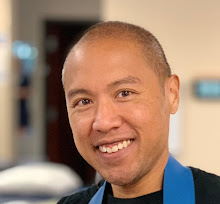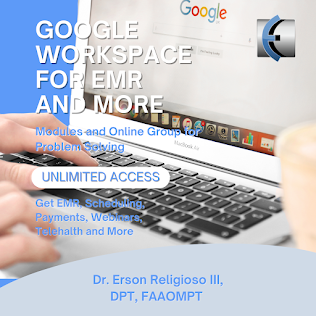A few readers requested my approach to integrating pain science with MDT. I wish there was an easy way, it's not quite as natural as combining MDT and OMPT for me (despite some saying that it is impossible!)
MDT gets criticized mainly for it's overly simplistic, mechanistic approach, and explanation that has been both proven and disproven for explaining the how's and whys of Derangement Syndrome. Even recent studies have shown repeated flexion and flexion loading increases posterior disc protrusions. Either way, MDT has been shown to be an excellent predictor of outcomes in regards to centralization and peripheralization. A recent study also found MDT to have better outcomes in the long term for lumbar pain patients compared to SMT, an article I will cover next week.
As I have stated previously, the "all your pain is in the brain" approach is well researched, but extremely difficult to implement clinically. The patients who need it the most are the ones who are most hard wired in their thoughts, anxieties, and catastophization. I use whatever plausible explanation that has anatomical and scientific merit to explain a patient's condition to them on evaluation, why it is occurring, and what we as a team must do to meet their goals. MDT does this naturally by showing cause and effects of postures and repeated motions, and most of the time showing patients they have a directional preference. Empowering the patient with a simple and effective HEP is a sure fire way to decrease anxiety and thus diminish CNS sensitivity. The DP makes more sense if you use the traditional "disc" model that so many non MDT clinician abhor. Believe the theory or not, the directional preference along with centralization and peripheralization occur in response to loading and unloading of structures.
The DP is the main reason why I stick to mechanistic explanations for most. Most of the naysayers state that SMT or STM only work because the patient thinks it's going to work. That doesn't explain why a patient, who believes they must "stretch" their back or neck, goes into repeated flexion, a motion many of them are already doing thousands of times/day. One of my favorite sayings is "If forward bending was going to help, it would've helped you by now." If the patient truly believes it was going to help, why didn't it eventually? If general motion was going to help, why did repeated stretching into forward bending worsen their complaints or in the least delay their healing? I recently had a lumbar patient with pain for over 10 years state he has been afraid to extend his lumbar spine for the same amount of time. During the subjective, he was afraid to go through postural correction. After education, and hip mobilizations, he was extending repeatedly with repeated end range loading and therapist overpressure. He was genuinely amazed that it not only helped, but it didn't hurt and worsen his complaints!
The DP of favoring backward bending or sidegliding over flexion when it actually centralizes complaints while remaining better is enough to make me think part of the dysfunction is mechanical. If all output is from the brain, and you can control it, it does not mean there is not a peripheral problem. For example, if a patient had a nail hammered into his shoulder, but could successfully educate his CNS to stop the pain output, it does not mean there is no longer a nail in his shoulder. Again, the concept of perceived threat works well for chronic cases, but not as well for acute cases. An acute derangement or what we would call an acutely locked cervical facet in OMPT, may occur by "sleeping incorrectly." If you are unconscious during sleep, why would the CNS perceive a threat during sleep and cause pain?
Getting back to integration, again, I only use this particular approach if my traditional combination of OMPT and MDT is not working with chronic pain patients. It is not easy and I am still struggling with practical ways of explaining this. I have always been a natural educator and speaker, able to change my explanations on the fly depending on a patient's level of comprehension an education. Dealing with catastrophizing patients is often like talking to a wall that is in a lot of pain.
If someone is not responding, I instruct on stabilization, and start to educate on CNS sensitivity. I tell them to read Explain Pain, and Mindfulness. I tell them to go for walks, hang out with friends. I tell them to tell everyone they are doing "GREAT!" I encourage function, strength, and ROM over pain. I am finding very few patients are willing to purchase a text. They want a "fix," not a text. I try to make their visits as comfortable as possible, often giving them a private room until it's time to do more exercise. I spend more time educating them and comforting them, sometimes up to 3/4 of the standard visit time.
If this post seems to be more 90% MDT and 10% pain science, that is because it is how I am in the clinic. Very few patients in my caseload, despite many being chronic/persistent pain cases need the approach because they respond to the treatment and education they are receiving. This is still a work in progress and I continue to follow and read research based on this; I hope to evolve and integrate it more than I have currently, if only because there may come a time when more of my caseload requires a pain science approach.
For more information on the pain science approach, please check out Dr. Joe Brence, DPT's new blog at Forward Thinking PT.











Post a Comment
Post a Comment